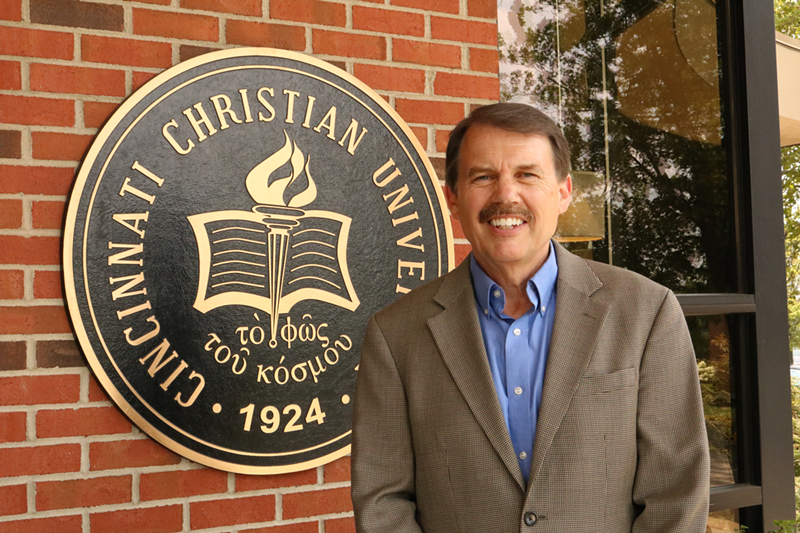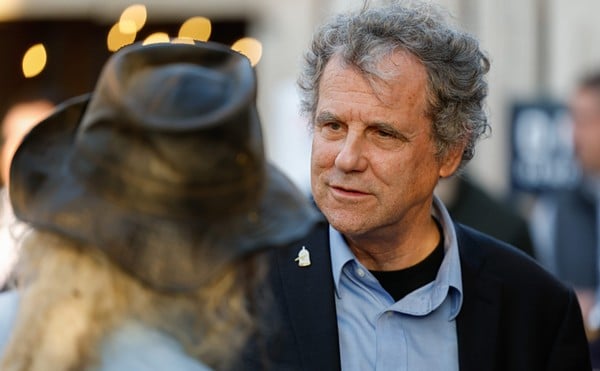A Price Hill-based university could lose accreditation after questions about its financial problems, student retention and a restructuring effort that shifted the school’s focus and student demographics have surfaced.
School leaders, however, say they are correcting many of the issues for which they are under scrutiny.
On July 11, Cincinnati Christian University (CCU) received a “Show-Cause Order” in a letter from the Higher Learning Commission (HLC), the nonprofit organization that accredits universities in Ohio.
The commission listed several concerns about CCU, including low graduation rates and questions about the school’s financial health. CCU administrators must show the HLC that they have addressed these issues in a report due before December or the university’s accreditation may be removed.
CCU’s accreditation is in peril because of problems that plague some other small colleges — including financial difficulties and low graduation rates — and issues with CCU’s attempts to address them. According to CCU Board of Trustees member Jonathan Sams, the college has hired legal help to address the HLC’s concerns and is continuing its work on fixing long-standing issues.
Many of the underlying problems at CCU can be traced back at least a decade, when its enrollment started to decline. Back then, the university focused on training ministers, which had been its primary purpose since it was founded in 1924. But about 11 years ago, according to CCU President Ronald Heineman, demand for this direct pipeline from high school to ministry started to dwindle.
“Young people just aren’t entering the ministry like they used to,” Heineman said.
For most of that period of decline, CCU continued to focus on seminary education. It wasn’t until 2015, the year after CCU’s last accreditation visit, that the school started to search for a more successful model.
One of the first changes was to recruit more student athletes, increasing the number on campus from 150 to over 400, according to the HLC letter. About 125 of those new students were football players on a team created that year, some perhaps lured by former CCU President Ken Tracy’s promise of a $5 million sports complex. According to Sams, the complex was abandoned once the board realized the full extent of CCU’s financial problems. The team has yet to win a game.
This new emphasis on athletics changed CCU’s student body, bringing in more first-generation college students. While Heineman and others at the university are excited by the increase in diversity, the demographic shift has also brought in more students “with substantially greater need of academic support and remedial education,” according to the HLC letter.
These students didn’t always receive the support they needed, a factor that likely contributed to CCU’s 51 percent retention rate in 2016, a significant decrease from its 75 percent rate in 2014. Since then, however, Heineman said that his administration has worked to increase remedial support.
During the coming school year, according to Heineman, there will be more available tutors and remedial lessons. Heineman also claimed that the retention rate for the 2018-19 school year had risen to approximately 82 percent, a statistic which should be reflected in the HLC’s upcoming follow-up report.
Another shift in CCU’s student body and mission was its transformation into a liberal arts college that offers degrees like education and business management in addition to biblical studies. This transformation contributed to some gaps in academic resources identified by the HLC letter, including a lack of library and technology support staff and highly qualified faculty. But, Heineman said, it’s tough to attract top-tier talent with no government funding and a focus on a faith-based mission.
In addition to these issues that more directly affect the student experience at CCU, the HLC letter also identified ongoing financial concerns. Heineman and Sams traced these issues back to before 2015, when the CCU Board of Trustees was almost completely replaced and they both joined. Prior to that year, Heineman said, the board had mostly been made up of “Godly men and women” who were primarily ministry-oriented. The post-2015 board contained more people with business acumen and experience overseeing large churches.
Heineman himself came to CCU after serving on the board of Vineyard Church, a local mega-church. He started as the chair of CCU’s finance committee, a position the board asked him to fill because of his previous experience restructuring businesses. Sams says that it was Heineman who discovered that CCU was burning through cash at a rate of about $375,000 a month and brought it to the whole board’s attention.
After realizing the full extent of CCU’s dire financial situation, Heineman says that he worked to implement an aggressive restructuring plan that, according to the HLC letter, “eliminated about one-third of CCU’s administrative staff and 10 percent of the faculty.” While Heineman said that he and his team have continued to work toward financial stability, the HLC letter noted that its monetary situation is still “fragile.”
In his efforts to recover CCU’s financial viability, Heineman has ended up holding three roles in the university’s leadership structure: he is simultaneously the President/CEO; the Chief Restructuring Officer (CRO) responsible for maintaining a good relationship between CCU and Central Bank & Trust, the institution’s primary lender; and a non-voting member of the Board of Trustees.
The HLC letter raised multiple issues with the “conflicts of interest posed by the President’s trio of roles.” Perhaps the most serious is the HLC team’s conclusion that Heineman as CRO “considers the bank’s interests to take precedence over institutional interests.”
Heineman denied that he was privileging the interests of the bank over CCU and said that this conclusion was an “error of fact.” He said that, unlike many CROs that are appointed by banks to turn around flailing institutions, he was appointed to the position by the CCU Board and then approved by Central Bank. According to Sams, the board wanted to proactively tackle the university’s problems so that the bank did not send in an outsider to do it for them.
The HLC letter also stated that CCU was violating its own bylaws by allowing Heineman to serve as both a board member and president. That generally isn’t permitted by the bylaws, but the Board passed a year-long amendment that allows the president to participate in board meetings as a non-voting member. Heineman is working the full-time president role pro bono and has a non-voting seat on the board. The HLC team was unconvinced by the temporary amendment and said it received scant evidence the school was making efforts to improve the situation.
Many of the HLC team’s concerns regarding Heineman’s roles center around larger questions about transparency from university leaders.
The HLC’s letter states that this is “evidenced by no public meeting minutes reporting the Board’s decisions” and pointed out that, at the time, CCU had no plans for increasing transparency besides suggesting that they put out a weekly newsletter. Heineman said that the board is now moving toward publishing minutes.
Something that wasn’t included in the HLC letter, but which quickly came to the attention of the CCU community: 2015 cease-and-desist proceedings against Heineman by the Securities and Exchange Commission (SEC).
The SEC alleged that in 2009, Heineman made “materially misleading statements and omissions” to auditors in his role as CEO of General Employment Enterprises, Inc., when $2.3 million in company cash went unaccounted for. The SEC document alleged that Heineman should have known that the cash was being used to commit fraud.
Ultimately, Heineman paid a fine to settle the case without admitting guilt.
Heineman denied to CityBeat that he had knowledge of the fraud at the time, and said that he had settled the case to avoid the more expensive litigation process. He also claimed that such issues are common, that a cease-and-desist order is a minor administrative infraction with the SEC and that multiple other people were also involved.
A widely shared Chronicle of Higher Education article on CCU’s Show-Cause Order also reported that Heineman owed several hundred thousand dollars in unpaid state taxes, which Heineman said he was working with tax attorneys to investigate and address.
In response to CCU students and parents who may have lost faith in his ability to lead the university after reading about the accreditation problems and his past legal issues, Heineman assured them that his work at CCU was purely an act of service that provided him with no financial benefits. He also said that, because he is accountable to the board and the university is fully audited, there are “enough checks and balances on his power,” and that CCU stakeholders should “trust the system” as the leadership team works to restabilize the university.
In about a year, the HLC will decide whether the university has improved enough for its accreditation to continue, and the CCU community will know if they put their trust in the right place.








